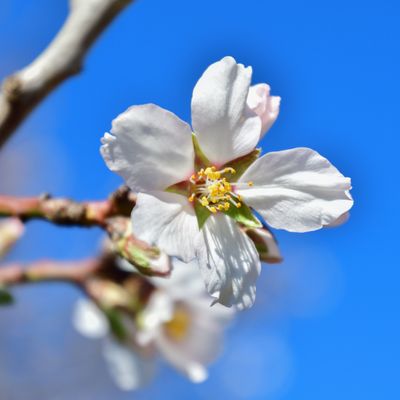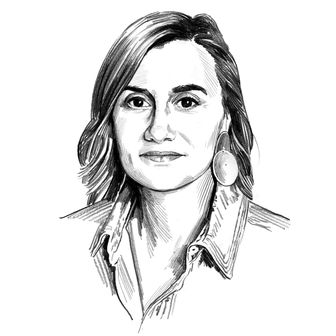
Tuesday morning, I was struck by an unfamiliar feeling. The sensation hit me as I cycled through my Groundhog Day–like routine, turning on a podcast normally filled with dire news about reckless reopenings and mutant virus strains. Instead, the incredulous hosts said that according to epidemiologists, the worst of the pandemic may be over. For five whole minutes, they rattled off positive updates: vaxxed people can hang out together indoors without masks, summer vacations may be on the horizon, warm weather will slow the virus’ spread. Then I heard the voice of Dr. Anthony Fauci, America’s doctor, declaring: “We are looking at a brighter future over the next several months.” Stunned, I got dressed in a daze. I felt a lightness, and as I looked in the mirror, sensed a slight tug at the corners of my mouth. From my desk window I smiled at a man walking his dog in a tank top and noticed the birds loudly chirping. What was this foreign emotion? Was it … hope?
I’m hesitant to even type those words. They feel awkward, like a second language I struggle to pronounce. Over the past year I’ve set my mental cruise control to disappointment, worried that if I take hope for a spin, I’ll crash and end up sobbing in a ditch. Now that health experts are giving me permission to feel less pessimistic, it’s hard to shift out of fear mode and stop bracing for another wave, another lockdown, another unforeseen tragedy that will once again swallow our lives. Just last month it seemed everyone had hit the “pandemic wall” and lost their cortisol-soaked minds. As vaccination rates shoot up, I remain cynical, muttering to my mother that I’ll be lucky to get one before Christmas. I’m skeptical when my best friend in the U.K. says she’ll visit this summer, unable to imagine a world where I’m allowed nice things, like friendship. At my core, I’m scared that if I let myself get excited, the promise of normal life will be instantly snatched away.
There are still plenty of good reasons to be filled with despair. We are still living in the wreckage of mass death, historic unemployment, a mental-health crisis, and a potential economic collapse on the horizon. Even those of us who are employed and healthy seem stuck in a state that one journalist called “pandemic fine,” where the low hum of constant stress makes you feel tired, depressed, and “like trash all the time.”
But amid all this suffering there are hopeful facts, more every day, that are starting to break through my despondent armor. Headlines that once described America royally bungling the vaccine rollout now declare a potential surplus of shots. President Biden just passed a revolutionary COVID-19 relief bill that could cut the child poverty rate in half and give families with kids a guaranteed income. And spring weather in New York means we can be social without pretending that dining al fresco with numb hands is fun. It means seasonal horniness might return to our unfeeling bodies! It means we can comfortably wear one layer for this brief, glorious period before the city turns into a swamp. Yet I’m still nervous that hope will betray me if I let her back in, or make me spiral into reckless behavior (last night, while drinking outdoors with colleagues who had just been laid off, I was reminded that the slippery slope between distancing and maskless hugging is precisely two Coronas).
But the total despair I’ve been feeling is neither healthy or helpful. As we emerge from the outbreak’s clutches, I know there’s a middle ground between acting like a grinch and a frat boy on spring break. The sociologist Zeynep Tufekci calls for “balanced optimism,” rather than a relentless pessimism that “is sapping people of energy to get through the winter, and the rest of this pandemic,” in a recent piece for the Atlantic. She highlights the need to “celebrate profoundly positive news while noting the work that still lies ahead.” In other words, hope and vigilance can coexist. It’s possible to hold both the utter tragedy and devastation of the past year alongside the fact that those scary graphs are now trending downward. If we don’t act like idiots, life will begin to normalize.
Sure, we might not be dancing half naked in clubs or packing into stadiums to shove stale hot dogs into our mouths anytime soon. But after the past year, the prospect of safely having dinner at a friend’s home, hugging my parents, or changing out of elastic waistbands for an outdoor wedding is enough to bring tears to my eyes.


